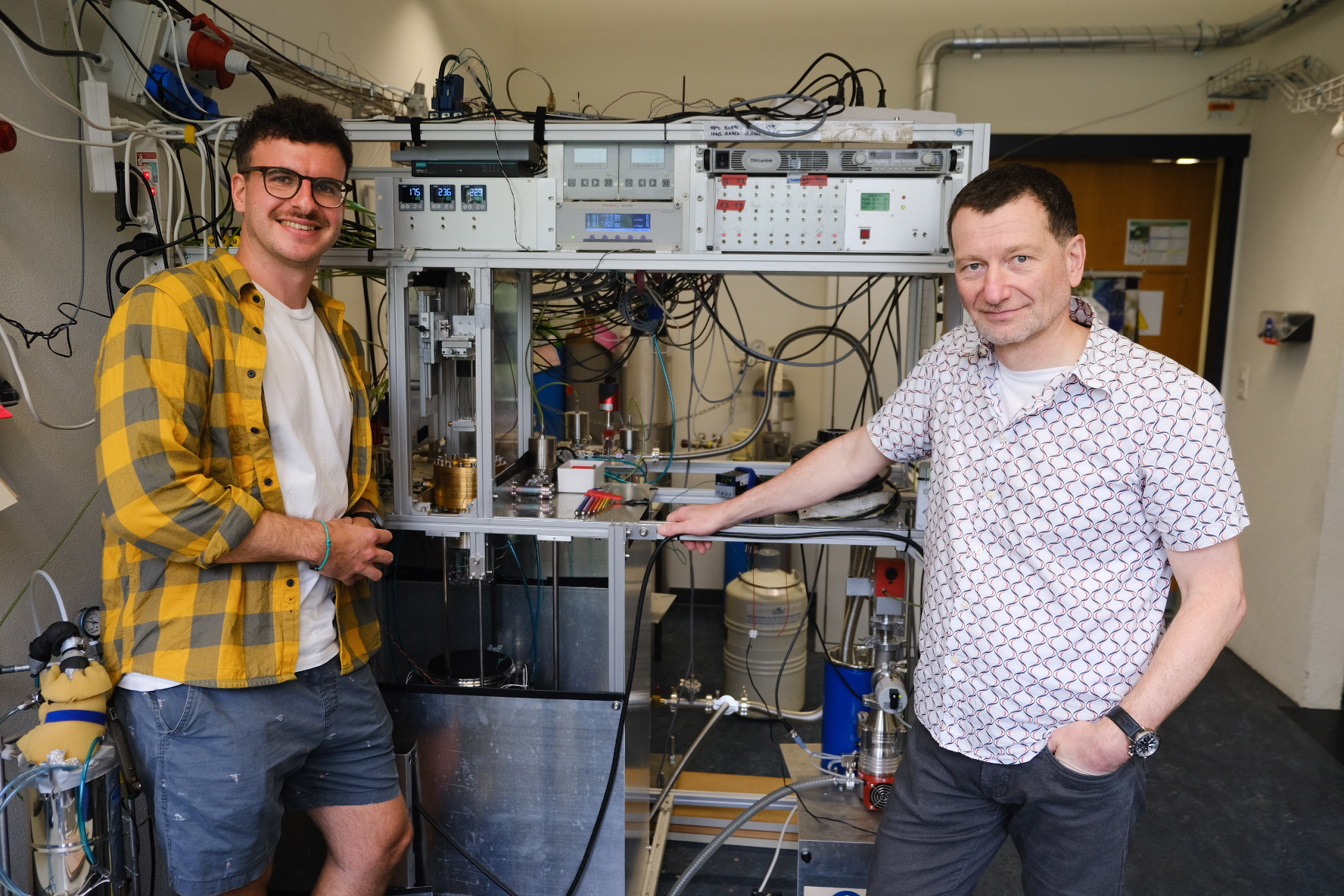The ice cores that will let us look 1.5 million years into the past
Moving quickly and carefully in two layers of gloves, Florian Krauss sets a cube of ice into a gold-plated cylinder that glows red in the light of the aiming laser. He steps back to admire the machine, covered with wires and gauges, that turns polar ice into climate data.
If this were a real slice of precious million-year-old ice from Antarctica and not just a test cube, he'd next seal the extraction vessel under a vacuum and power on the 150-megawatt main laser, slowly causing the entire ice sample to sublimate directly into gas. For Krauss, a PhD student at the University of Bern in Switzerland, this would unlock its secrets, exposing the concentrations of greenhouse gases like carbon dioxide trapped within.
To better understand the role atmospheric carbon dioxide plays in Earth's climate cycles, scientists have long turned to ice cores drilled in Antarctica, where snow layers accumulate and compact over hundreds of thousands of years, trapping samples of ancient air in a lattice of bubbles that serve as tiny time capsules. By analyzing those bubbles and the ice's other contents, like dust and water isotopes, scientists can connect greenhouse-gas concentrations with temperatures going back 800,000 years.
 Fischer (right) and Krauss with their LISE apparatus.COURTESY PHOTO
Fischer (right) and Krauss with their LISE apparatus.COURTESY PHOTOEurope's Beyond EPICA (European Project for Ice Coring in Antarctica) initiative, now in its third year, hopes to eventually retrieve the oldest core yet, dating back 1.5 million years. This would extend the climate record all the way back to the Mid-Pleistocene Transition, a mysterious period that marked a major change in the frequency of Earth's climatic oscillations-cycles of repeating glacial and warm periods.
Successfully drilling a core that old-a years-long endeavor-might be the easy part. Next, scientists must painstakingly free the trapped air from that ice. Krauss and his colleagues are developing an innovative new way to do that.
We're not interested in the ice itself-we're just interested in the air samples included, so we needed to find a new way to extract the air from the ice," he says.
Melting isn't an option because carbon dioxide easily dissolves into water. Traditionally, scientists have used mechanical extraction methods, grinding up samples of individual layers of ice to free the air. But grinding wouldn't be effective for the Beyond EPICA ice in the university's storage freezer, which is kept at 50 C below zero. The oldest ice at the very bottom of the core will be so compressed, and the individual annual layers so thin, that bubbles won't be visible-they'll have been pressed into the lattice of ice crystals, forming a new phase called clathrate.
At the very bottom, we expect 20,000 years of climate history compressed in only one meter of ice," says Hubertus Fischer, head of the past climate and ice core science group at Bern. That's a hundredth the thickness of any existing ice core record.
The new method Krauss and Fischer are developing is called deepSLice. (A pizza menu is taped to the side of the device right under the laser warning labels, a gift from a pizzeria in Australia with the same name.) DeepSLice has two parts. The Laser-Induced Sublimation Extraction Device, or LISE, fills half a room in the team's lab space. LISE aims a near-infrared laser continuously at a 10-centimeter slice of ice core so that it turns directly from solid to gas under extremely low pressure and temperature. The sublimated gas then freezes into six metal dip tubes cooled to 15 K (-258 C), each containing the air from one centimeter of ice core. Finally the samples are loaded into a custom-made absorption spectrometer based on quantum cascade laser technology, which shoots photons through the gas sample to measure concentrations of carbon dioxide, methane, and nitrous oxide simultaneously. Another big advantage of this system is that it takes a lot less ice (and work) than the old method of analysis, in which scientists measured methane by melting ice (it doesn't dissolve into water) and measured carbon dioxide by grinding ice.
DeepSLice offers a unique capability that nobody else has," says Christo Buizert, an ice core scientist at Oregon State University and the ice analysis lead for COLDEX (the Center for Oldest Ice Exploration)-the US equivalent of Beyond EPICA, which is currently in a friendly race" with the Europeans to drill a continuous core down to 1.5-million-year-old ice.
What they're trying to do, sublimating ice-people have been trying this for a long time, but it's one of the most challenging
ways to extract gases from ice," Buizert says. It's a very promising way, because you get 100% of the gases out, but it's very difficult to do. So the fact that they've managed to get it working is very impressive."
Krauss and Fischer still have about three years before they get their hands on that section of critical ice. There are still kinks to iron out, like how to recapture the samples from the spectrometer for additional analysis, but they think they'll be ready when it finally arrives in freezer containers on a ship from Antarctica via Italy.
Our latest results showed us we are on a good track, and actually, we achieved the precision we wanted to," Krauss says. So I'm sure it's going to be ready."
Christian Elliott is a science and environmental reporter based in Chicago.